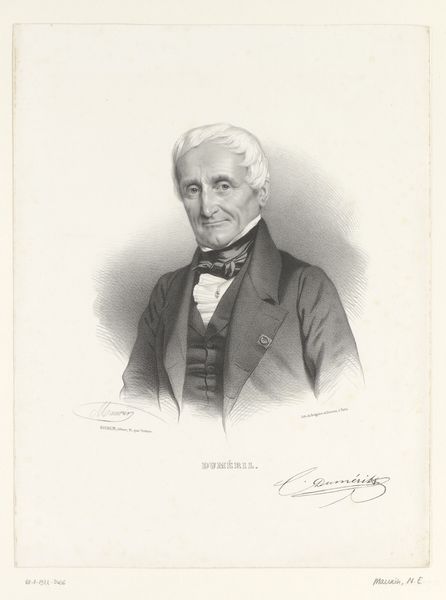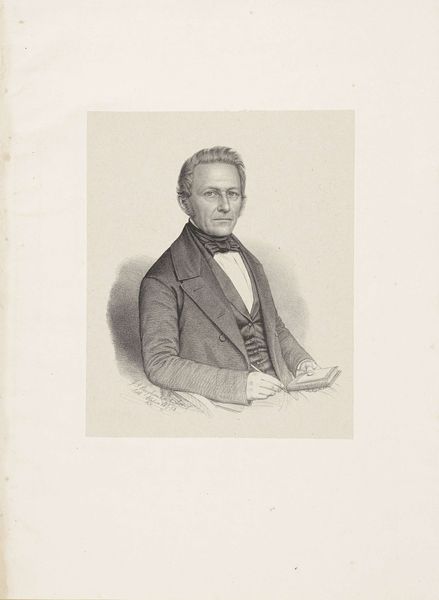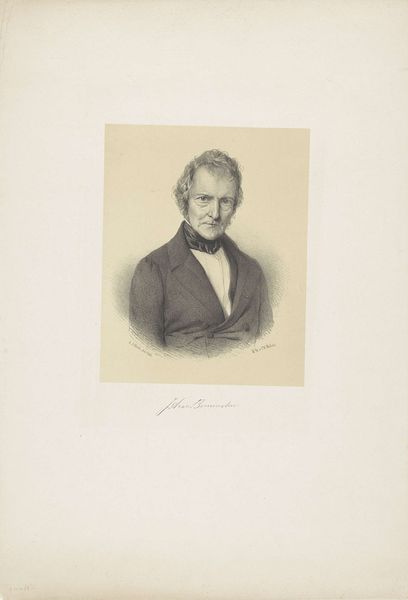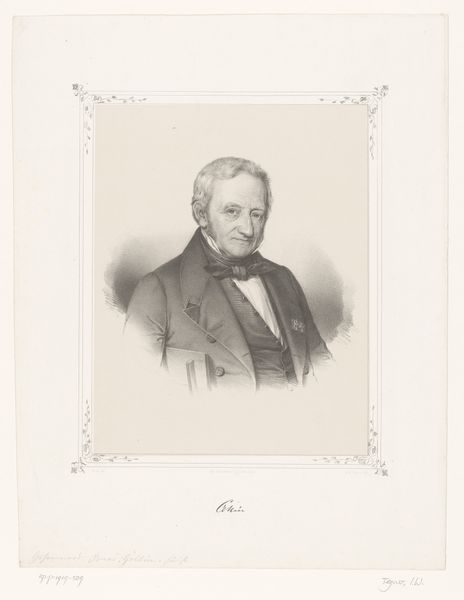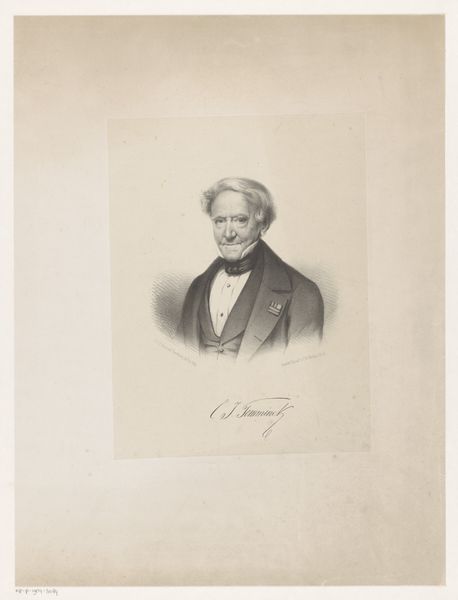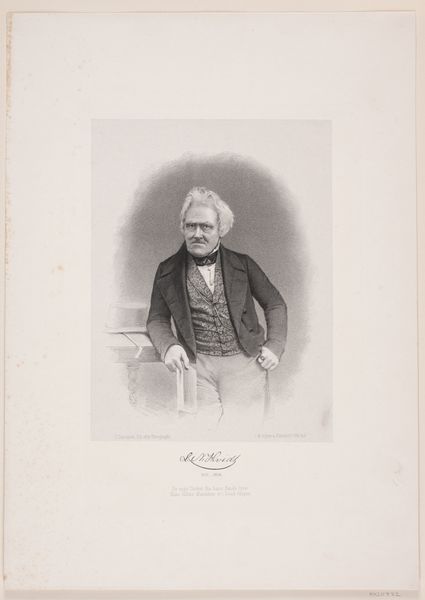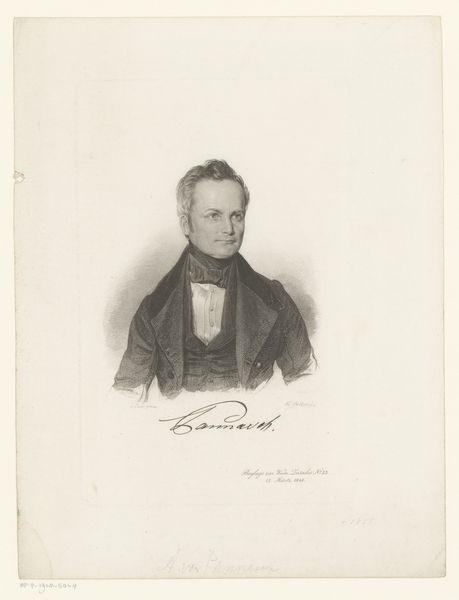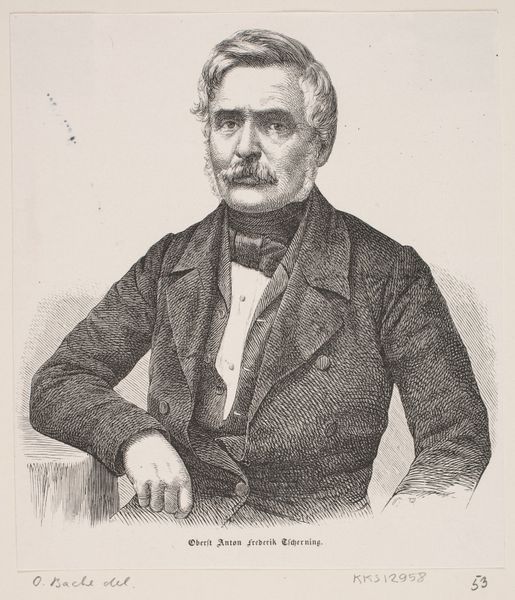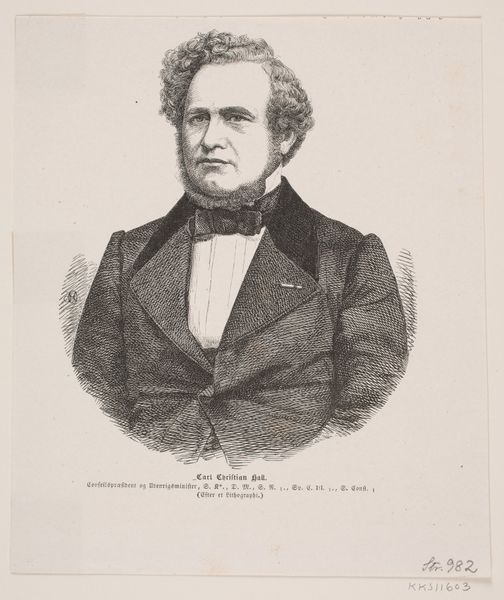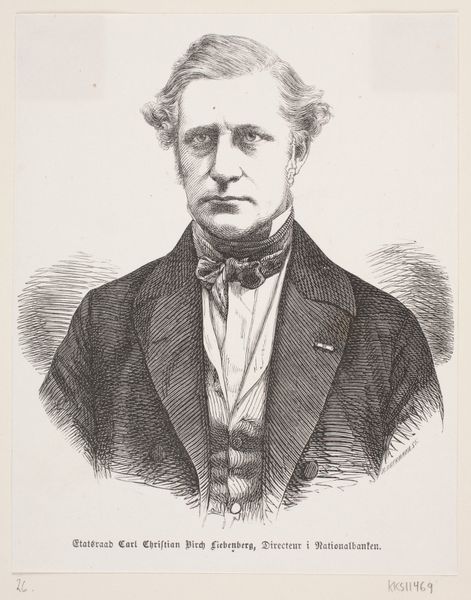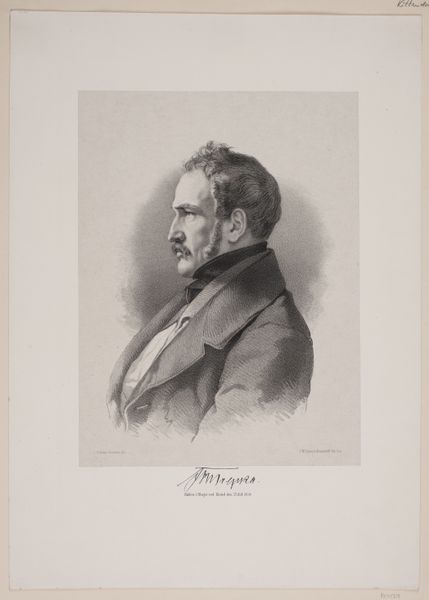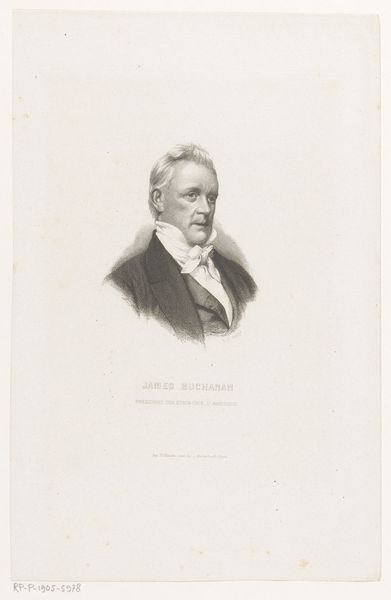
lithograph, print
#
portrait
#
16_19th-century
#
lithograph
# print
#
academic-art
#
realism
Dimensions: 205 None (height) x 152 None (width) (billedmaal), 310 mm (height) x 235 mm (width) (bladmaal)
This is a portrait of B. F. Jensen, made by Johan Niels Martinus Thorsøe, but we do not know when. The portrait is rendered through lithography, a printmaking technique that involves drawing on a stone or metal plate with a greasy substance, then applying ink, which adheres only to the drawn areas. This process allows for the reproduction of fine lines and tonal variations, as we can see in the subject's face. Lithography emerged in the 19th century alongside the rise of capitalism and mass production. Printing created new opportunities for artists to disseminate their work widely. Yet, each print still required skillful labor, embodying a tension between artistic expression and industrialized reproduction. By focusing on the intricate process of lithography, we can appreciate how artistic skill intersects with broader economic and technological developments. This piece challenges us to reconsider traditional hierarchies of art, craft, and industry.
Comments
No comments
Be the first to comment and join the conversation on the ultimate creative platform.
